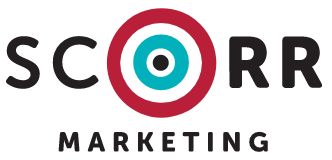News
SCORR Marketing Advice Vol.4

Consistency is the key to dealing with long sales cycles
By Cinda Orr
Only a relatively few times in my career have I had the luxury of working with clients that have a product or service that people might buy on an impulse. Far more often, we seem to be dealing with technically complex and expensive services or products that can be months or even years between the initial contact with a prospect and a successful sale.
What these marketing challenges nearly always have in common is the requirement for a lot of up-front knowledge and a number of (not necessarily consistent) internal buying influences. It also frequently means that only a tiny fraction of the total audience is in “ready-to-buy” mode at any given moment. If you hope to influence a particular purchase decision with your marketing in this arena, you’d better have laid the groundwork months or even years before.
The only effective way we know of to deal with a long sales cycle is to plan ways to stay in front of your prospect, once identified, for the long haul. Of course, you’ve already planned a consistent media campaign in the publications your prospects read, along with regular press releases and trade show appearances, and you’ve probably supplemented with direct mail and online promotion as well.
Another good way to keep in touch with potential customers while they’re in the information-gathering stage is with a newsletter. And while some companies still print and mail a traditional paper copy, many are opting for the more inexpensive, efficient and environmentally-friendly, e-newsletter. So many companies have done this, however, that many people are suffering from e-mail overload.
The one way around this inbox overload is to make sure your e-newsletters deliver news your customers can use, not come-ons or puffery. They must be personal and individual in tone, and must arrive in the user’s inbox with a reliable frequency. Think of how you react to e-newsletters; the ones you read are of particular interest to you and what you do. They are usually compact and streamlined in the way they’re written, quickly summarizing salient points and only offering depth and detail as a “click-here” option. Any copy or design element that leads the reader to put it aside for later perusal (e.g. if it looks too long or complicated) has been scrubbed in favor of a read-it-now immediacy.
If you have more to say or if your news is more immediate, consider publishing a blog to stay in front of prospects. To be effective, though, blogs have to push out new, relevant information on a regular basis – don’t start one if you don’t think you can carry through or your readership will suffer.
Blogs and e-newsletters can be extremely effective and inexpensive marketing tools that will help you strengthen your bond with clients and prospects, making them feel closer to you; more like an insider. More importantly, newsletters and e-newsletters can help keep your brand top of mind and your customers more informed and therefore more likely to buy from you when the moment of truth finally comes.